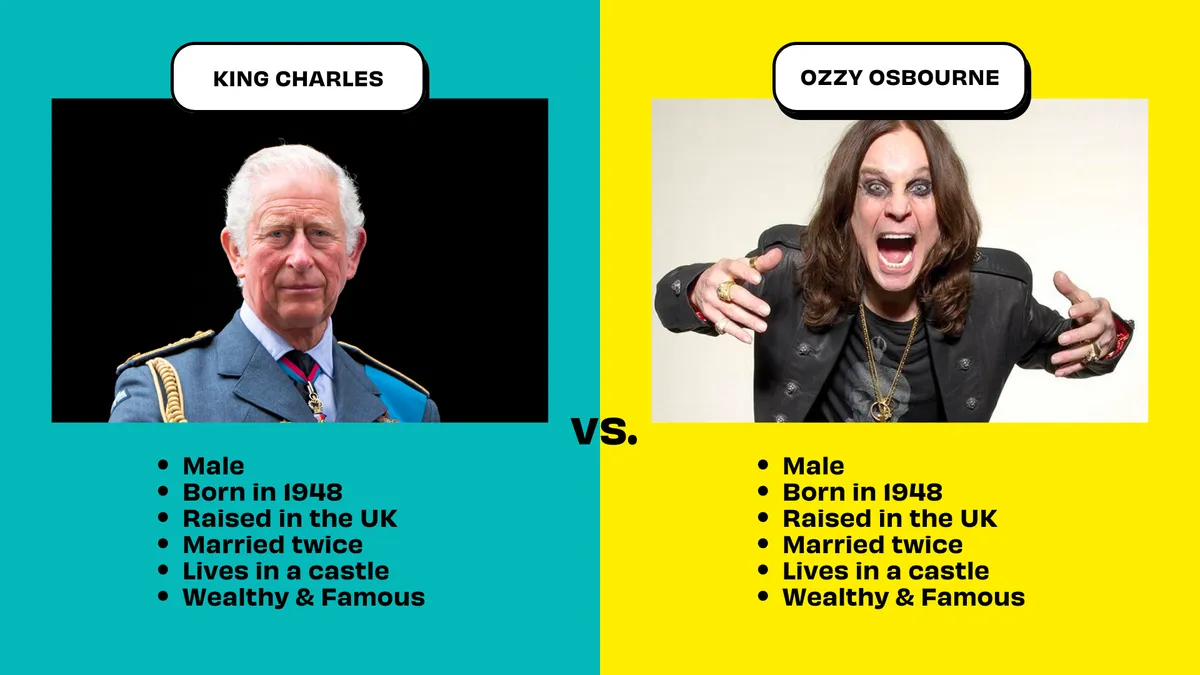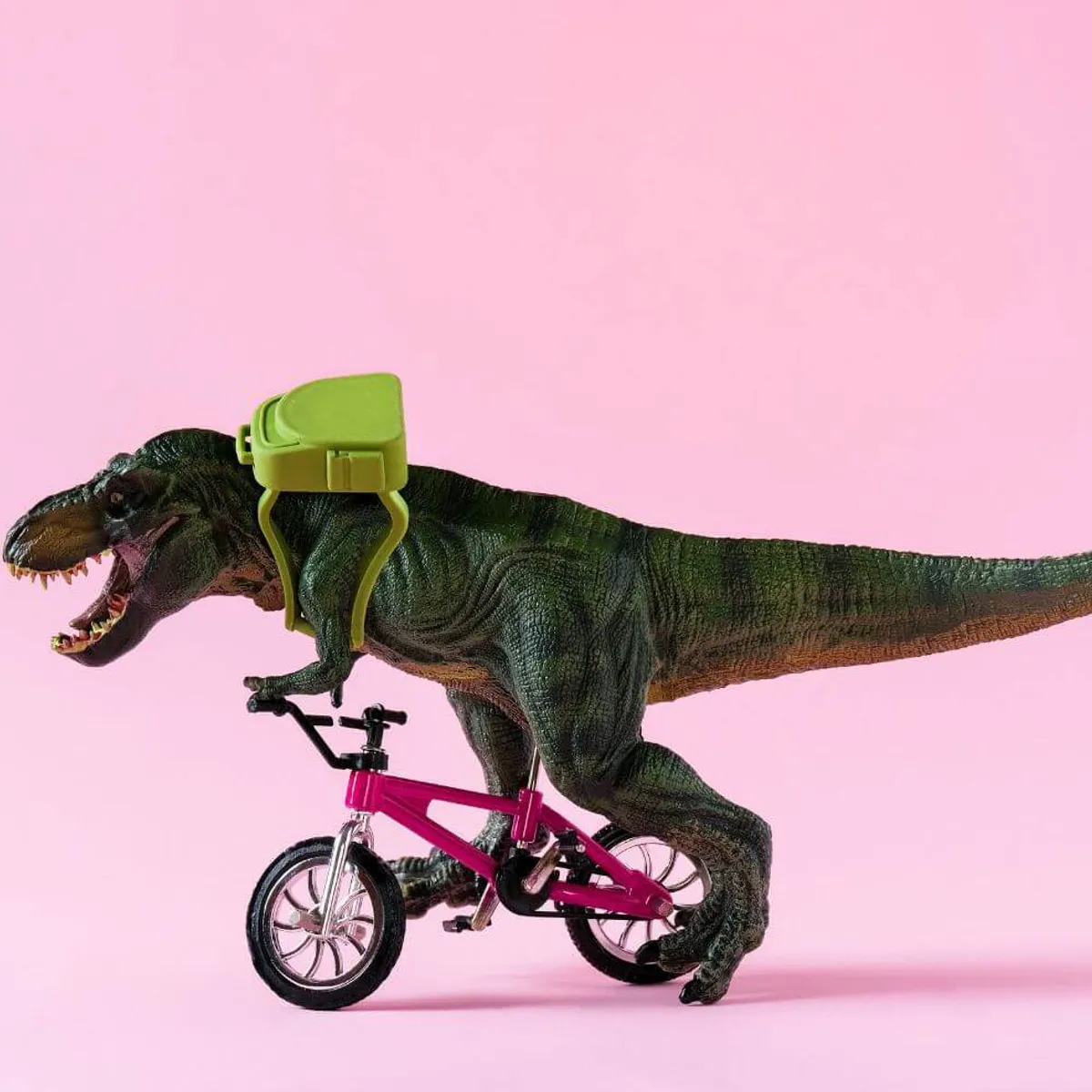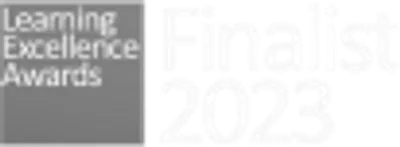want some cookies?
We use cookies to make your browsing experience amazing.

The Ultimate Guide To Learner Personas
Let’s be honest, designing learning without truly understanding your audience is a bit like writing a love letter to “whom it may concern.” It might tick the right boxes, but it’s unlikely to connect. So how do you tick the right boxes and connect with your audience? With personas, of course.
A well-crafted persona helps you step into the shoes of your learners – not as abstract “users” or job titles, but as real human beings with goals, frustrations, habits, and quirks. It gives you the clarity and confidence to design learning that’s not just well-intentioned, but well-received.
In this guide, we’ll walk you through everything you need to know about learner personas, including:
What is a learner persona?
Why do you need them in your L&D function?
How to research and build them
How to use them for maximum impact
How to keep them useful over time
Whether you’re starting from scratch or looking to sharpen your approach, this guide is here to help you move from generic to genuinely effective – one learner persona at a time.
WHAT IS A LEARNER PERSONA?
A learner persona is a semi-fictional representation of your target audience. It's built using a mix of research, data (both qualitative and quantitative), and some (well-educated) assumptions. Instead of relying on broad demographics or job functions, personas give you a deeper understanding of who you're creating learning for – and more importantly, why your learning offering will matter to them.
With well-crafted learner personas, L&D teams can:
Move beyond surface-level assumptions and start designing with empathy.
Uncover emotional drivers and behavioural patterns that influence learning.
Increase engagement by making learning feel more personal — because it is.
When you centre your strategy around real people (not just “learners”), you start building learning experiences that are more than just informative – they’re impactful, memorable, and actually used.
THE IMPORTANCE OF UNDERSTANDING YOUR AUDIENCE
We talk a lot about “learners” in L&D, but here at MAAS, we have a bit of an issue with that word. Sure, it’s a shared term that helps us speak the same language. But here’s the thing: the moment we label someone as a “learner,” we subtly shift the responsibility onto them. It implies they’re already engaged, already learning, and already bought into whatever it is we’re offering.
And that’s a problem.
Nobody thinks about learning and development as much as we do in L&D. Our audiences aren’t spending their spare time thinking about how to upskill themselves, what training course they’ll take next, or ways to learn in the flow of work. It quite simply does not cross their minds. So with this in mind, it’s easy to see why labelling them as ‘learners’ is detrimental to our success.
Understanding your audience starts with dropping the label and seeing people as they really are – employees, yes, but also human beings. People with context, pressures, emotions, and varying levels of motivation. When we stop treating them like faceless “learners” and start understanding them as human beings, everything shifts.
You begin to create learning that actually resonates.
You begin to solve real business problems.
You begin to create solutions that people want to get involved in.
Because if we’re building content and strategies on assumptions – or worse, our own expectations – we’re not really connecting. And when there's no real connection, there’s very little chance of meaningful engagement.
At the heart of great L&D is a mindset shift: from pushing learning onto people, to understanding what they truly need – and designing from there.
THE RISK OF NOT UNDERSTANDING YOUR AUDIENCE
It can be tempting to skip this process of deep diving into your audience, and go straight to content development. You’ve got no end of stakeholders asking for a “quick eLearning course” or a “one dayer on…”. And sometimes it feels easier to just do what they’re asking you to do. But here’s the catch: if you’re not clear on who you’re creating for, you’re pretty much shooting in the dark.
When we don’t take the time to understand our audience as people, we risk building learning (and subsequent communications) that:
Misses the mark entirely – because it doesn’t speak to the real challenges or goals of the individual.
Feels irrelevant or generic – which makes it easy to ignore.
Reinforces a disconnect between L&D and the wider business – because it’s built on assumptions, not insight.
Even with the best intentions, poorly targeted learning can come across as tone-deaf or misaligned. And that kind of disconnect? It doesn’t just result in low engagement – it chips away at trust. Because people can tell when something’s been made for them… and when it hasn’t.
Understanding your audience isn’t just a “nice to have.” It’s the foundation of any L&D strategy that wants to cut through the noise and actually make an impact.
THE BENEFITS OF LEARNER PERSONAS
When you build learning based on real insight – not assumptions – everything gets better. Learner personas give you the clarity and confidence to move away from one-size-fits-all training and toward something far more powerful: learning that actually makes sense to the people it’s designed for.
Here’s what happens when you start building with personas:
1. YOU GET BETTER ENGAGEMENT
2. YOUR COMMUNICATION LANDS
3. PEOPLE REMEMBER WHAT THEY LEARN
4. YOU CAN PROVE THE VALUE OF L&D
5. YOU BUILD A LEARNING CULTURE PEOPLE ACTUALLY WANT TO BE PART OF
Bottom line? Personas help you stop guessing and start designing with purpose. And that’s when learning stops being a checkbox – and starts becoming a real driver of change.
KEY COMPONENTS OF A LEARNER PERSONA
Creating a learner persona isn’t just about ticking boxes – it’s about piecing together a story that helps you understand the real person behind the data. When done right, a learner persona acts as your guide to designing learning that feels relevant, personal, and genuinely helpful.
To get there, you’ll want to explore three key dimensions:
1. DEMOGRAPHICS: SETTING THE SCENE
Demographics give you some basic context – like who this person is on paper, and the environment they’re operating in. On their own, they’re not game-changers, but they help frame the bigger picture.
Some useful data points to gather:
Job Role & Level – Gives you insight into daily responsibilities, decision-making power, and likely career goals.
Experience & Tenure – Someone early in their career will need something very different from someone with a decade under their belt.
Location & Work Setup – Whether they’re remote, hybrid, or office-based has a big impact on how they access and engage with learning.
Just remember: two people with the same job title can have completely different needs. Demographics are the start — not the full story. In fact, here’s a little example to show you why:

Indeed, King Charles III and Ozzy Osborne have identical demographic data. Same age, same number of marriages, same location. But their personalities? Couldn’t be more different. So the next time you think about segmenting and targeting your audience based on demographics alone, think of this pair, and stop.
2. PSYCHOGRAPHICS: WHAT MAKES THEM TICK
This is where things start to get interesting. Psychographics go deeper, helping you understand what drives a person, what holds them back, and how they relate to learning at a more emotional level.
You’ll want to dig into:
Values & Motivations – Are they here to climb the ladder? Become an expert? Keep their workload manageable? Recognition? Flexibility? It all matters.
Pain Points & Barriers – What’s getting in the way of learning? Time? Confidence? Previous bad experiences?
Hobbies, aspirations and interests – who are they beyond an employee at your organisation? What are they interested in? What gets their heart racing?
This is the heart of your persona, where you move from just understanding what someone does, to understanding why they behave the way they do.
3. BEHAVIOURAL DATA: WHAT THEY ACTUALLY DO
Finally, it’s time to look at real-world patterns, the kind you can observe and track. Behavioural data shows you how people are acting during the working day, interacting with learning, and what their habits say about them.
Keep an eye out for:
Where They’re Hanging Out – Where are they spending time at work? Both physically and digitally? Is it the intranet? Is it the office canteen? Where are they? (Oh, and if you’re in a multinational company, think about their geographic location too!)
Engagement & Learning Patterns – Do they learn in short bursts between meetings? On mobile during commutes? Late at night? Do they click through on your emails? Or do they interact more on your intranet?
Tech Usage – What platforms do they naturally gravitate toward — your LMS, SharePoint, Slack, external courses?
This data helps ground your persona in reality. It’s one thing to think your people like interactive content — it’s another to see the click-throughs and completion rates that prove it.
When you bring these three layers together — demographic context, psychographic depth, and behavioural evidence — you get more than a profile. You get clarity. And that’s what allows you to design learning that actually speaks to the humans you’re building it for.



STEP-BY-STEP GUIDE
HOW TO BUILD LEARNER PERSONAS
You’ve done the groundwork. You’ve had the conversations, dug into the data, and started to spot patterns. Now it’s time to bring it all together and actually build your learner persona — something practical, visual, and ready to guide your learning strategy.
Here’s how to do it:
STEP 1: MAKE STRATEGIC ASSUMPTIONS
Let’s be honest, you’re probably not going to have every single data point. And that’s okay.
Where gaps exist, make thoughtful, well-informed assumptions based on what you do know. These aren’t wild guesses, they’re grounded insights you can test and validate as you go.
Tip: Don’t go it alone. Use learner feedback, manager input, and early engagement data to sense-check your thinking. And through it all, be hyperaware of your own and others biases. Personas should feel like a reflection of reality — not a hopeful projection.
STEP 2: BUILD YOUR PERSONA
Now for the fun part… turning your insights into something tangible.
A great learner persona is easy to understand and even easier to use. It should be visual, shareable, and instantly spark ideas for learning design, comms, and engagement.
Here’s what to include:
Personal Profile – A name, a role, a few key traits to make them feel real.
Motivations & Pain Points – What drives them? What frustrates them?
Learning Behaviours – What formats work best? What types of experiences do they prefer?
Communication Preferences – What kind of tone, channels, and timing will actually get their attention?
Keep it clear, concise, and human. This isn’t a persona for persona’s sake, it’s a tool for building learning that sticks.
📑 Want some help? We've got a free learner personas template just for you. Ain't we nice?!
STEP 3: TEST & VALIDATE
Personas aren’t finished the moment you create them, they need testing.
And to test, you’ve got to put your personas to work (see the next section!), and create campaigns targeted at your personas. And if you aren't ready to run full-scale campaigns just yet, run small experiments instead. Try out new messaging, formats, or learning nudges that align with the persona’s preferences. Then track what works.
Some ideas to help you work out what works:
A/B test subject lines or course descriptions
Monitor clicks, completions and feedback (and compare different communication methods!)
Ask for direct learner input: “Did this feel relevant to you?”
STEP 4: ITERATE & EVOLVE
People change. Teams shift. Priorities move. Your personas should, too.
Set a regular rhythm to review and refresh them, quarterly, annually, or whenever something major changes in the business. Keep an eye on new patterns in engagement data and stay curious about what your people need now, not just what worked a few years ago.
Because the most powerful personas are the ones that grow with your audience — and keep your learning just as relevant as the day it launched.
WANNA KNOW MORE? WATCH HAN’S VLOG NOW 👇
HOW TO USE LEARNER PERSONAS IN L&D
Creating learner personas is a great first step. But the real magic happens when you actually use them — consistently, strategically, and across your entire L&D approach. When you do, everything from your content to your comms becomes sharper, smarter, and more human.
Here’s how to make personas a living, breathing part of your L&D strategy:
1. USE THEM TO SHAPE TRAINING DESIGN
Yes, that’s right, personas aren’t just for marketing! Once you know more about your audience, you can design experiences that actually work for them — not just look good on paper. And with your personas in mind, you can also enhance your learning experience with a UX lens – making sure you’re always putting your audience first.
2. PERSONALISE YOUR LEARNING COMMUNICATIONS
We’ve all ignored an LMS notification or deleted a “mandatory training” email, haven’t we? Why? Because so often, the messaging just doesn’t land.
Personas help fix that.
They let you craft comms that speak to people’s motivations, challenges, and goals. They help you utilise the right language to grab learners attention. And of course, they help you answer the all-important “What’s in it for me?” question. And with all that in mind, you can craft marketing that feels like it was actually meant for the person reading them.
📖 Want to dive deeper into this? Read: How to actually use personas in learning comms
3. ALIGN YOUR ENGAGEMENT STRATEGIES
When learning feels disconnected from someone’s real-world experience, they switch off. Fast.
Personas help you build campaigns that meet people where they are — grounded in their day-to-day challenges, their pain points, and what actually matters to them at work.
Whether it’s the theme of your learning week, the timing of your nudges, or the way you frame your learning benefits, personas keep you anchored in empathy, not just output.
BUILD PERSONAS, BUILD BETTER LEARNING.
If there’s one thing we hope you take from this guide, it’s that learner personas aren’t just a “nice to have” — they’re a practical, powerful way to bring your learning strategy closer to the people it’s meant to serve.
By understanding your audience on a deeper level, their motivations, challenges, behaviours, and context, you can move beyond generic training and start creating learning that’s genuinely engaging, relevant, and impactful.
And once you start designing with your audience in mind (instead of just for them), everything shifts. Engagement goes up. Communication lands better. Learning starts to feel like a support system, not a checkbox.
So now what? Now you’ve got personas in place, it’s time to level-up and consider your audience decision making journeys, to create marketing for learning campaigns that truly make a difference to your organisation.











